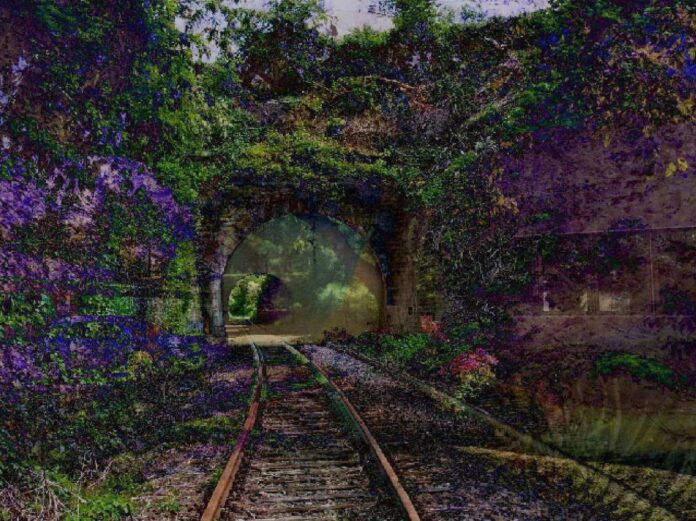The United States Copyright Office (USCO) has famously denied copyright to selfies taken by non-human animals. In 2019 and 2020, it refused multiple copyright requests made by inventor Stephen Thaler on behalf of his artificial intelligence (AI) engine. In a more recent ruling, United States District Court Judge Beryl A. Howell opted to uphold the refusal, citing the absence of a “guiding human hand” in the AI-generated artwork’s creation.
Thaler’s AI algorithm—referred to in court papers as the “Creativity Machine” and in Thaler’s terms the Device for the Autonomous Bootstrapping of Unified Sentience (Dabus)—had generated an image titled A Recent Entrance to Paradise (2012) and he had petitioned for the copyright of the image be given to the Creativity Machine, which would then transfer onto him as its owner. Following the rejection of his second appeal to the USCO in 2020, he had gone to court with a lawsuit characterising the Office’s refusal as “arbitrary, capricious, an abuse of discretion and not in accordance with the law”.
The Copyright Act of 1976, published seven years before the official birth of the internet, and around 40 years before “creative” machine output became part of our daily lives, governs the majority of copyright law today. Is it reasonable to expect a nearly 50-year-old law to be applicable when determining copyright for AI-generated content?
Intellectual property lawyer Stephanie Glaser at Patterson Belknap believes so. “The Copyright Act is well-equipped to handle the generative AI revolution, in the same way that it has handled previous technological revolutions,” Belknap says. “There is enough flexibility in the ‘human authorship’ ownership requirement to allow artists who use AI to obtain copyright ownership over their works if they are the ones who are controlling at least some of the creative expression—that is in fact what makes them artists to begin with and not autonomous machines.”
The USCO’s recent Guidelines on Artificial Intelligence, published in March, posit that in an AI-generated work of art, “traditional” artistic choices are made by algorithms rather than the people who use them. The guidelines state that “users do not exercise ultimate creative control over how such systems interpret prompts and generate material. Instead, these prompts function more like instructions to a commissioned artist—they identify what the prompter wishes to have depicted, but the machine determines how those instructions are implemented in its output.”
In the case of Thaler’s more autonomous Creativity Machine, where Thaler’s own position itself was that the AI-engine was the author, the argument for lack of human authorship is more self-evident. With the more popular AI image-generating engines Midjourney or Dall-E 2, which require text-based or visual prompting from a user (likely a human) to generate images, the threshold for sufficient human authorship is murkier.
Erin Hanson, a partner at the law firm White & Case who specialises in technology and intellectual property law, also has faith in the Copyright Act. Citing its clause that “Copyright protection subsists […] in original works of authorship fixed in any tangible medium of expression, now known or later developed” as evidence of its flexibility, she emphasises that the “underlying policy, its objective, of copyright law is to incentivise creative human expression”.
Like many, Hanson is interested in seeing the degree to which oversight or intervention (presumably by a human) may be required with AI-generated works to ultimately qualify for copyright protection. She notes that neither the USCO’s guidelines nor the recent court ruling against Thaler preclude a form of human control or guidance “that could ultimately, potentially lead to copyright protection, but it would be very much dependent on how the AI technology actually works and the context. It would be a case by case analysis.”
USCO public affairs specialist Nora Scheland also emphasised that determinations are made case by case, and that the USCO believes Judge Howell’s verdict to be the correct one. She adds that the guideline state the USCO would consider granting copyright if there is further editing, manipulation or improvement on the AI-generated product by the artist.

Jon Rafman, ??????????? (Puppet Man 1), 2022 Courtesy of the artist and Sprueth Magers
Canadian artist Jon Rafman’s recent series ????? ?’?????, shown at Sprüth Magers in London between in February and March of this year, fits the bill. He uses acrylic paint to create brushstroke patterns on a canvas, onto which he then prints AI-generated images. This methodology theoretically satisfies the copyright requirement, something Rafman says he had never even considered. He believes in what he calls “‘the zeitgeist of the internet’, which embodies a radical promise of open access to all information and cultivates a remix culture that has flourished online”, which is also how he rose to prominence in the 2000s.
Rafman considers the Thaler ruling, as well as the populist backlash against AI, to be “a conservative impulse that fetishises hand-crafted, labour-intensive art”.
Beyond the Thaler case, Rafman says there is a craft to creating AI-generated images that lies in the art of writing prompts. “Much like a poet, the promptist employs language with precision and economy,” he says. “The artistry in crafting prompts is in translating human imagination into machine-readable directives. With the increasing sophistication and democratisation of AI, the role of the prompt-writer is becoming central and could reshape the future of what it means to be an artist.”
Two centuries of science fiction literature and film was unable to prepare us for the growing pains of humanity’s relationship with algorithmic computing. Whatever the future might hold, it is worth noting that the Thaler ruling did not set a precedent against copyright protection being granted to any AI-generated image across the board.

























